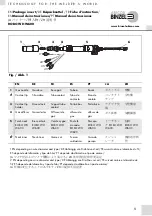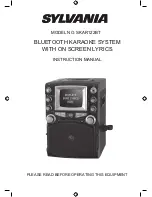
6.0
PROTECTION GASES GUIDE
METAL
Mild steel
Aluminium
Stainless steel
Copper, Nickel and
Alloys
GAS
CO2
Argon + CO2
Argon + CO2 + Oxygen
Argon
Argon + Helium
Argon + CO2 + Oxygen
Argon + Oxygen
Argon
Argon + Helium
NOTE
Argon controls spatters
Oxygen improves arc stability
Arc stability, good fusion and minimum
spatter.
Higher heat input suitable for heavy
sections. Minimum porosity.
Arc stability.
Minimum spatter.
Suitable for light gauges because of low
flowability of the weld pool.
Higher heat input suitable for heavy
sections.
Contact the technical service of your gas supplier to know the percentages of the different
gases which are the most suitable to your application.
7.0
WELDING HINTS AND MAINTENANCE
•
Always weld clean, dry and well prepared material.
•
Hold gun at a 45° angle to the workpiece with nozzle about 5 mm from the surface.
•
Move the gun smoothly and steadily as you weld.
•
Avoid welding in very drafty areas. A weak pitted and porous weld will result due to air blowing
away the protective welding gas.
•
Keep wire and wire liner clean. Do not use rusty wire.
•
Sharp bends or kinks on the welding cable should be avoided.
•
Always try to avoid getting particles of metal inside the machine since they could cause short cir-
cuits.
•
If available, use compressed air to periodically clean the hose liner when changing wire spools
IMPORTANT: Disconnect from power source when carrying out this operation.
•
Using low pressure air (3/5 Bar=20-30 PSI), occasionally blow the dust from the inside of the wel-
der. This keeps the machine running cooler. Note: do not blow air over the printed circuit board
and electronic components.
•
The wire feed roller will eventually wear during normal use. With the correct tension the pressure
roller must feed the wire without slipping. If the pressure roller and the wire feed roller make con-
tact (when the wire is in place between them), the wire feed roller must be replaced.
•
Check all cables periodically. They must be in good condition and not cracked.
5.4.8 ALUMINUM WELDING
The machine will be set up as for mild steel except for the following changes:
•
100% ARGON as welding protective gas.
•
Ensure that your torch is set up for aluminum welding:
1.
The lenght of the torch should not exceed 3m (it is advisable not to use longer torches).
2.
Install a teflon wire liner (follow the instructions for the renewing of the wire liner at paragraph
5.4.3).
3.
Ensure that drive rolls are suitable for aluminium wire.
•
Use contact tips that are suitable for aluminum wire and make sure that the diameter of the con-
tact tip hole corresponds to the wire diameter that is going to be used.
In Synergic Welding to weld Aluminum it is enough to select the wire’s diameter (0,8mm-1,0mm-1,2mm)
and the Argon gas. In AUTOMATIC mode the synergic welding curves of these wires will be available.
To make welding of thin aluminium plates easier it is possible to activate the function Pulse on Wire by
pressing the Gas Selector push-button till the Ar Led is flashing. In this function mode if the torch trigger
is kept pressed, the unit is automatically activated and deactivated at regular intervals making possible
a welding with a reduced thermal injection.
-ENGLISH-
25
24
-ENGLISH-
















































